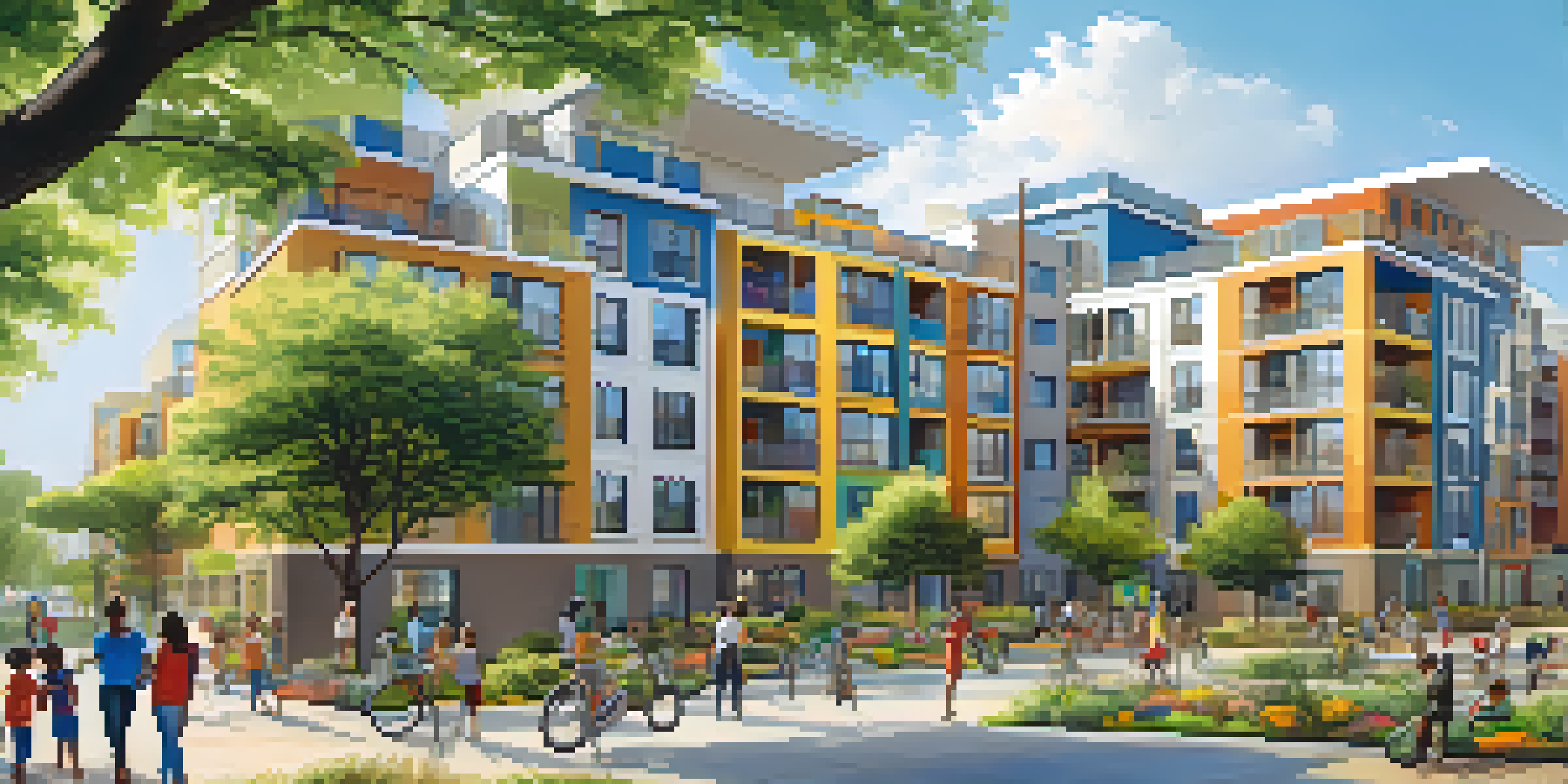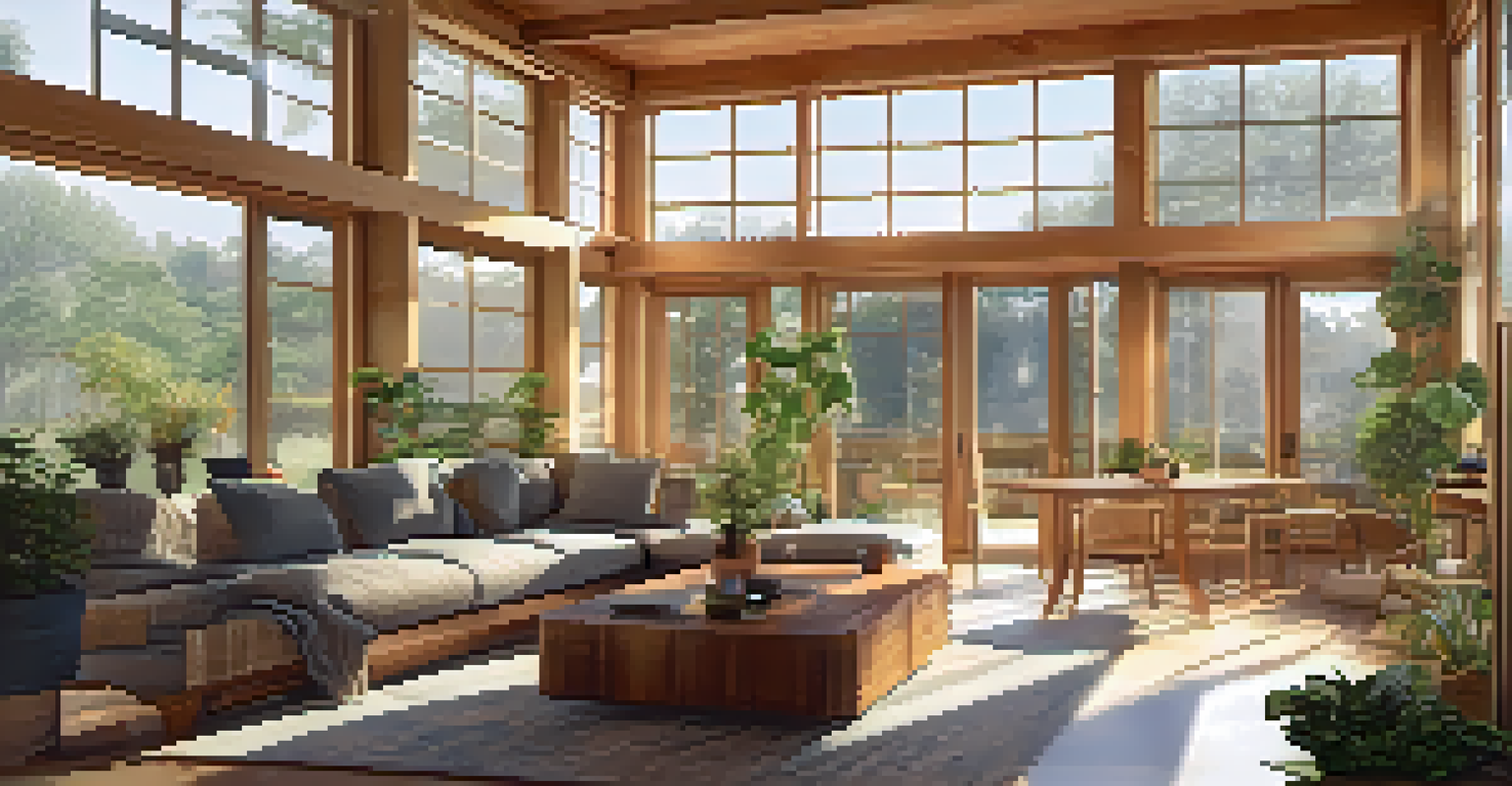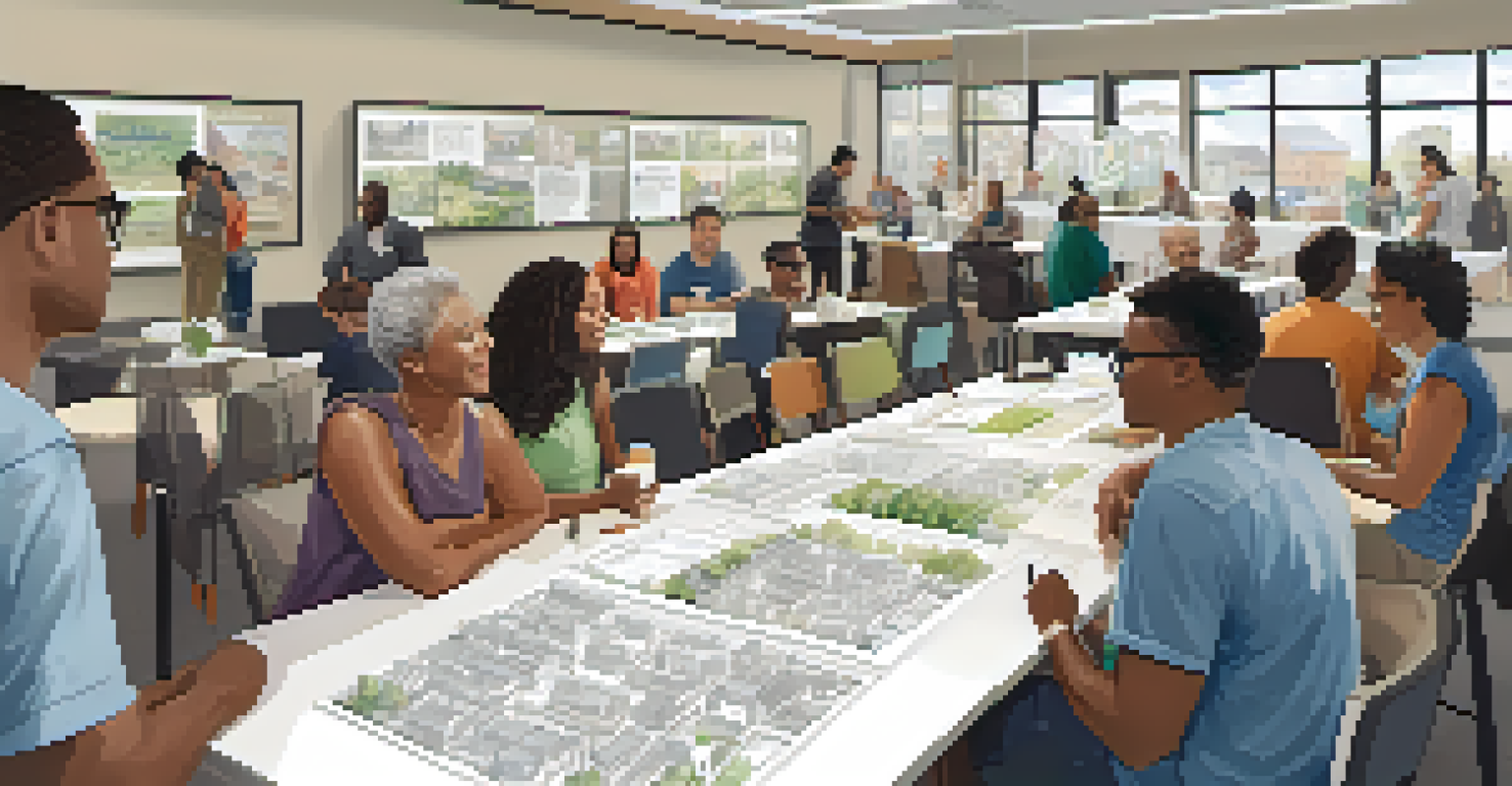Affordable Housing: Balancing Sustainability and Livability

The Importance of Affordable Housing in Today's World
Affordable housing is more than just a roof over one’s head; it’s a vital part of community health and stability. In many urban areas, the cost of living continues to rise, pushing many families toward financial strain. By providing affordable housing, we can ensure that everyone has access to safe and secure living conditions, which directly impacts their quality of life.
Affordable housing is critical because it not only provides shelter but also strengthens communities and fosters economic growth.
Additionally, affordable housing can stimulate local economies. When people can afford to live close to their jobs, they spend less on transportation and have more disposable income to invest in their communities. This creates a ripple effect, boosting local businesses and enhancing community ties.
Moreover, affordable housing can serve as a foundational element for social equity. By ensuring that diverse communities have access to housing options that fit their budgets, we promote inclusivity and foster environments where all individuals can thrive.
Defining Sustainability in Housing: What Does It Mean?
Sustainability in housing refers to building practices that minimize environmental impact while maximizing resource efficiency. This includes utilizing eco-friendly materials, energy-efficient designs, and sustainable construction methods. The goal is to create homes that not only serve their occupants but also respect and preserve the planet for future generations.

For instance, solar panels, green roofs, and rainwater harvesting systems are becoming increasingly popular in sustainable housing designs. These features not only reduce a home’s carbon footprint but can also lead to significant savings on utility bills, making them attractive for those seeking affordable options.
Affordable Housing Supports Communities
Affordable housing not only provides safe living conditions but also stimulates local economies and promotes social equity.
Furthermore, sustainable housing often incorporates community green spaces, which promote biodiversity and improve residents' mental health. By blending nature with urban living, we can create environments that are both livable and environmentally responsible.
Challenges in Creating Affordable, Sustainable Housing
While the concept of affordable and sustainable housing is appealing, several challenges complicate its implementation. One major hurdle is the financial aspect; sustainable building materials and techniques often come with a higher upfront cost, which can deter developers from pursuing these options. This creates a tension between affordability and sustainability.
Sustainability is not just about the environment; it’s about our communities, our lives, and the future we want to create.
Additionally, zoning laws and regulations can limit the types of sustainable practices that can be implemented in certain areas. For instance, cities may have restrictions on building heights or densities that could otherwise allow for more efficient land use.
Lastly, there’s often a lack of awareness or understanding among stakeholders about the long-term benefits of sustainable practices. Educating developers, policymakers, and the public about the positive impacts of green housing can help bridge this gap.
Innovative Solutions for Sustainable Affordable Housing
Despite the challenges, innovative solutions are emerging that blend affordability with sustainability. One exciting approach is modular housing, where homes are built off-site and assembled quickly on location. This method not only reduces construction waste but can also lower labor costs, making it a win-win for affordability and sustainability.
Another promising solution is the adaptive reuse of existing buildings. By renovating old warehouses or factories into affordable housing units, communities can preserve their historical character while providing modern living spaces. This not only saves resources but also revitalizes neighborhoods.
Sustainability Minimizes Environmental Impact
Sustainable housing practices utilize eco-friendly materials and designs, benefiting both residents and the planet.
Community land trusts are also gaining traction as a way to ensure long-term affordability. These nonprofit organizations acquire land and develop it into affordable housing, ensuring that it remains accessible for future generations, thereby creating a sustainable community model.
The Role of Technology in Housing Sustainability
Technology plays a crucial role in enhancing the sustainability of affordable housing. Smart home systems, for example, allow residents to monitor and reduce their energy consumption, leading to lower utility bills. These systems can automate lighting, heating, and cooling based on usage patterns, making homes more efficient.
Additionally, advancements in building materials, such as recycled or rapidly renewable materials, are revolutionizing how homes are constructed. These innovations not only reduce waste but also promote the use of sustainable resources, contributing to a more eco-friendly building process.
Furthermore, 3D printing technology is emerging as a game-changer in the construction industry. This method can significantly reduce material waste and labor costs, making it easier to produce affordable housing units quickly and sustainably.
Community Engagement: A Key to Successful Housing Projects
Community engagement is essential for the success of affordable and sustainable housing projects. When residents are involved in the planning process, their needs and preferences can be addressed, leading to designs that truly serve the community. This collaborative approach fosters a sense of ownership and pride among residents.
Hosting workshops and discussions allows community members to voice their opinions and contribute ideas. Engaging local organizations and stakeholders can also ensure that the housing developments reflect the unique character and values of the neighborhood.
Community Engagement Drives Success
Involving residents in the planning process ensures that housing projects meet community needs and fosters local support.
Moreover, community engagement can help in overcoming resistance to new developments. When people feel heard and included, they are more likely to support projects, reducing opposition and promoting harmony within the community.
The Future of Affordable Housing: A Sustainable Path Forward
Looking ahead, the future of affordable housing lies in embracing sustainable practices that prioritize both the environment and community well-being. As urban populations continue to grow, innovative solutions will be crucial in meeting housing demands without compromising our planet's health.
Policies that incentivize sustainable building practices and support affordable housing initiatives will play a key role in shaping this future. Governments and organizations must work together to create frameworks that encourage developers to adopt green technologies and materials.

Ultimately, a commitment to sustainability in affordable housing can lead to healthier communities, a more equitable society, and a restored planet. By prioritizing both livability and ecological responsibility, we can create homes that not only shelter us today but also protect future generations.